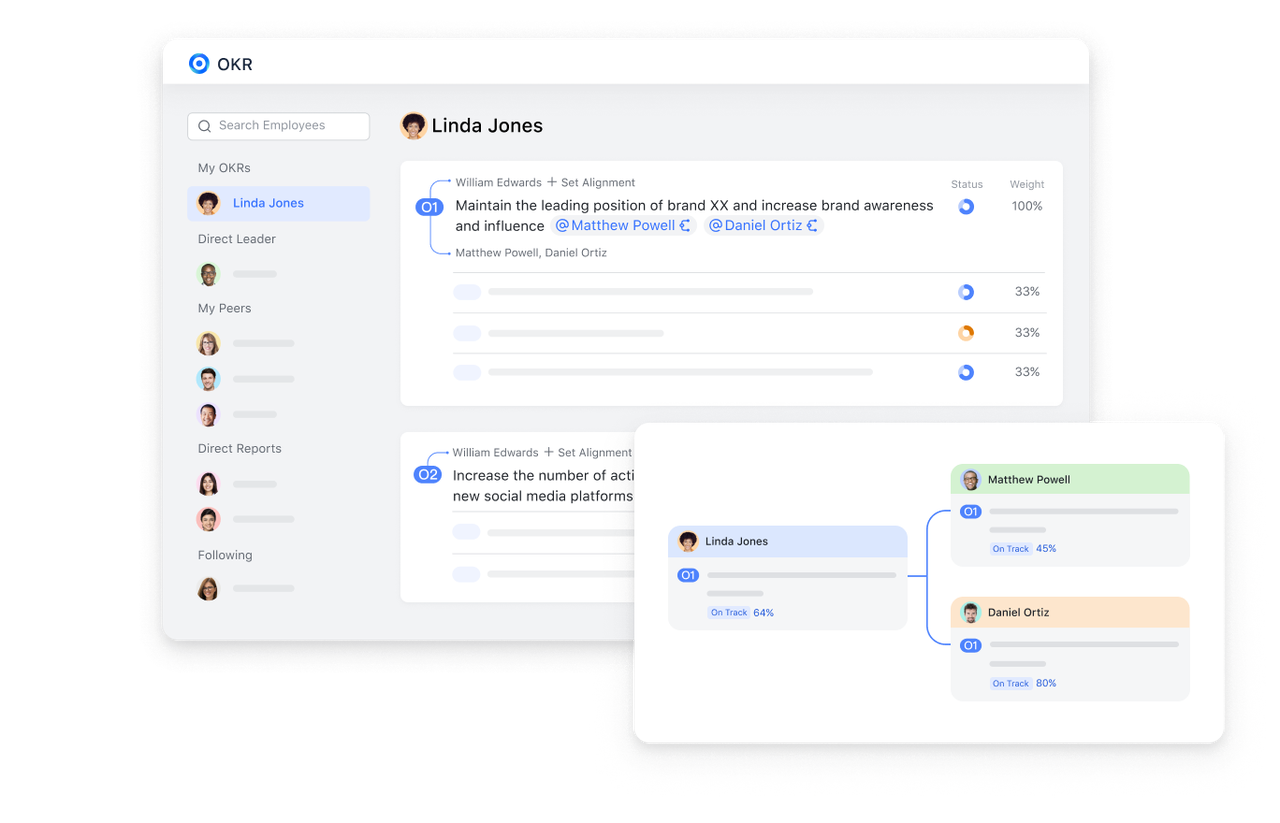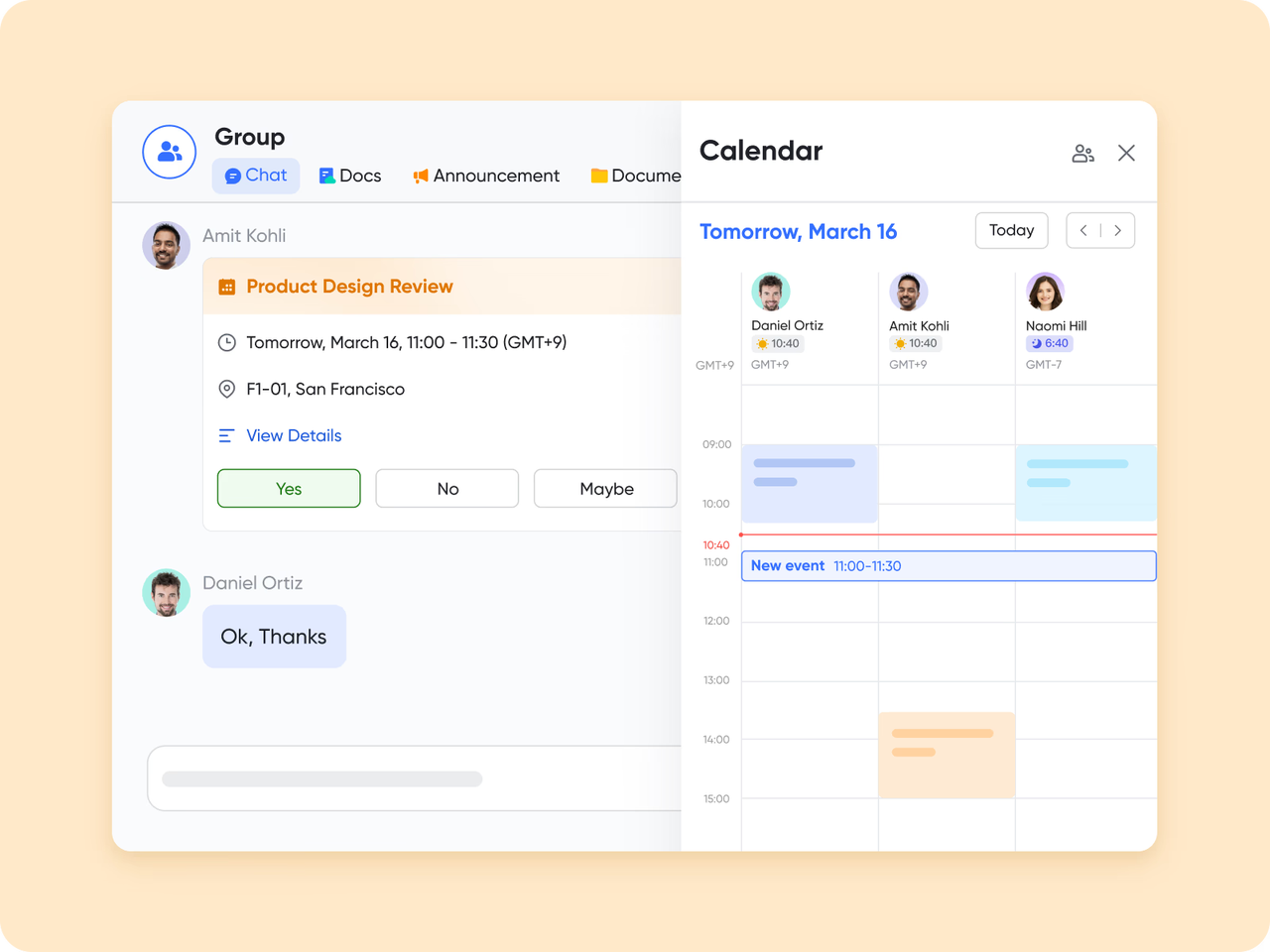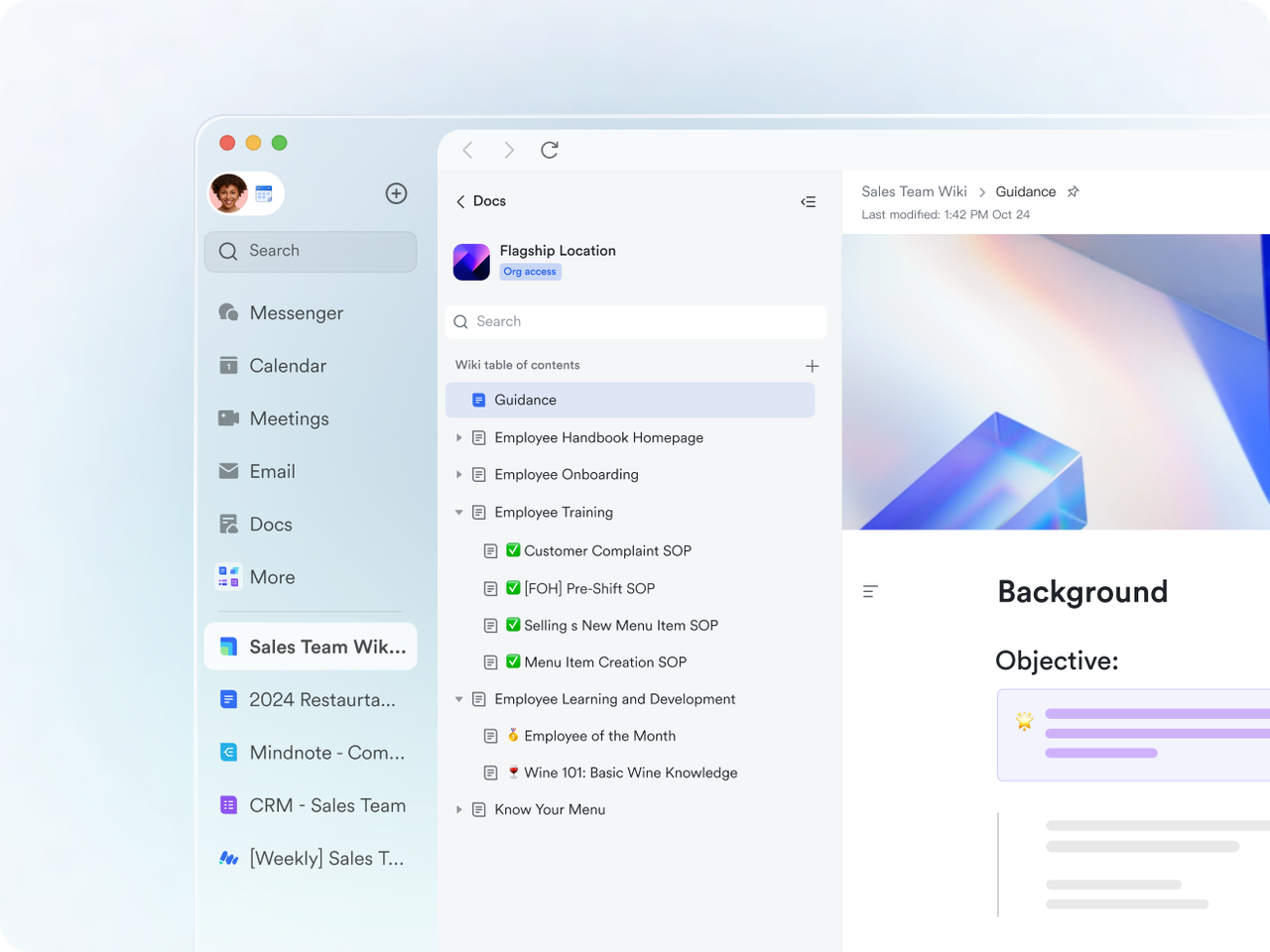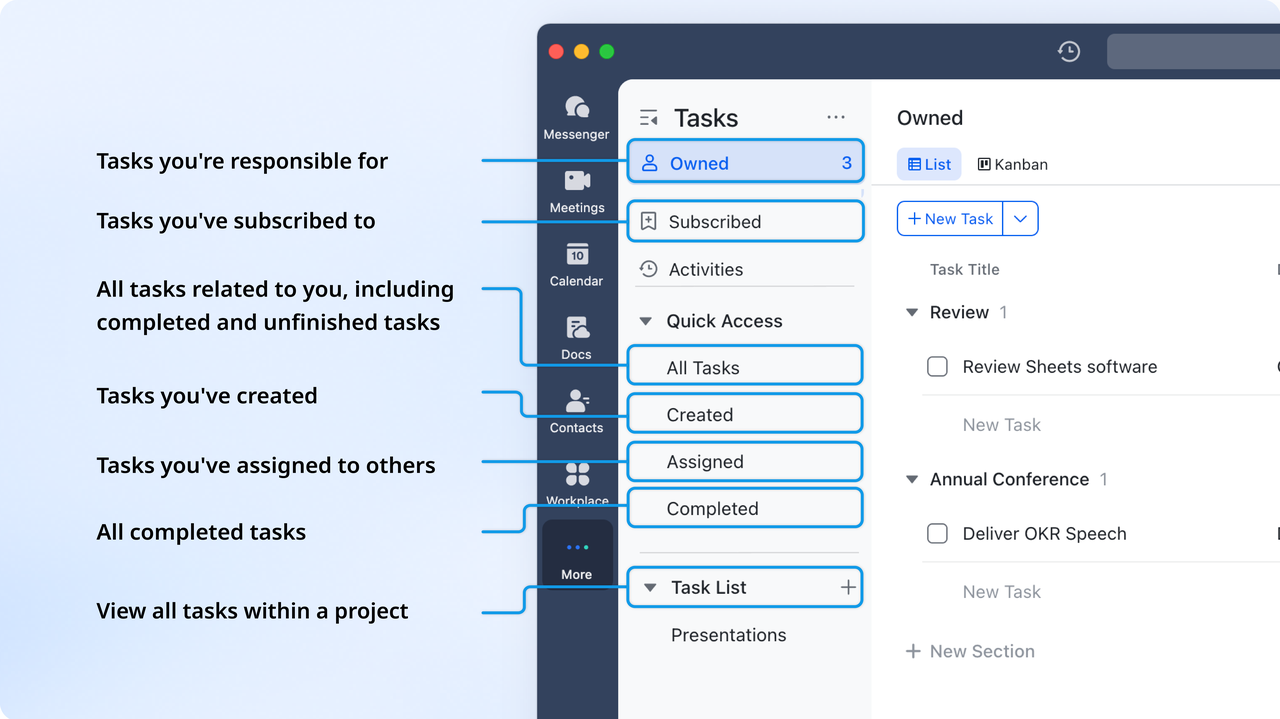A lot of businesses don’t have problems with skills or vision; they have problems with getting everyone to agree on things. Leaders have to work hard to tie everyday tasks to long-term goals because various teams have different goals and information is stored in different places. People are busy, but it seems like development is going in all different directions, which is a waste of time.
Alignment is based on project management tools in the present day. They put strategy, tasks, and communication all in one flow so that everyone in the company knows what they’re doing and why. Lark points out that unified platforms help companies see things clearly and work together to move forward instead of doing things in diverse ways.
Lark Base: Building shared visibility
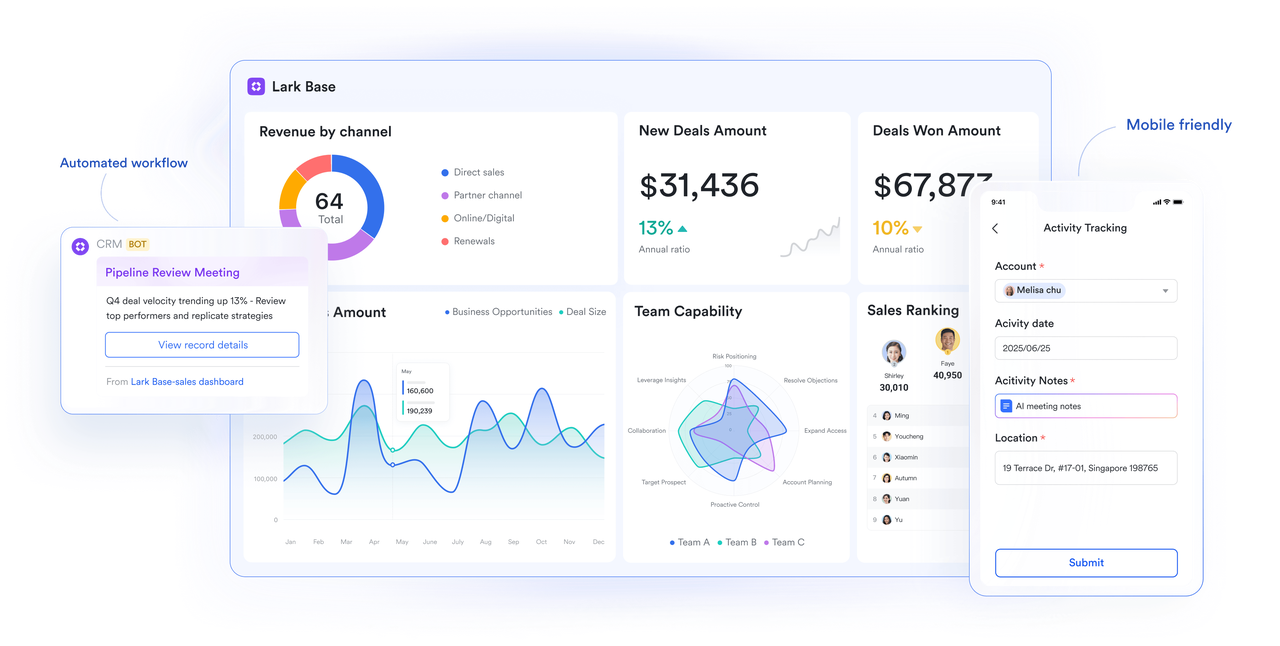
The first step to getting everyone on the same page is to be clear. When sales, marketing, and operations all have their own monitors, leaders can’t see how things are going. When departments do the same work or miss it, they quickly get out of sync.
Lark Base fixes this by being the main place for all projects. In kanban view, marketing can run campaigns, operations can keep track of resources on a schedule, and sales may take the smart features in Base to customize a CRM app, tracking leads, visualizing sales, and syncing commercial dynamics with others. In this way, everyone can view the updates because they are all in the same system and share information together.
This shared visibility makes sure that departments don’t only see what they’ve done; they also see how it helps the organization reach its goals. Employees know how their work affects other people, which makes things clear and helps everyone get along.
Lark OKR: Linking goals to execution
It’s easy to set goals, but it’s challenging to keep teams on track with them. A lot of organizations have huge plans for the future, but they don’t connect those objectives to the work that needs to be done every day. This makes it challenging for employees to figure out what to do first. Lark OKR fills this gap by linking the work of a team directly to results that can be measured.
At the corporate level, goals are set, and key results provide you clear goals to work toward. Base or Tasks automatically transmit updates so that leaders may see how things are going in real time. For instance, if the company wants to get more customers, marketing can keep an eye on how well campaigns are going while sales keep track of how many customers they turn into clients.
This creates a cycle of alignment that never ends. People who work for a corporation don’t only do their jobs; they also recognize how their work fits into the greater picture. Execution and strategy stay linked, and alignment becomes a natural part of work.
Lark Calendar: Synchronizing commitments
Things can still progress slowly even if everyone knows what they want to do if their schedules don’t match up. Different departments could have different work schedules, which could cause problems for the whole company. Lark Calendar makes sure that time is a useful tool for getting things done.
Calendar automatically shows milestones that are linked to OKRs or established in Base. This makes it easy for everyone to notice the due dates, which means that one team is less inclined to slow down another. Automatic time zone adjustments are beneficial for teams that work in more than one country since they stop workers from making mistakes that cost money when they don’t coordinate.
When you put plans on the calendar, you make them real. Not only do teams work together to reach their goals, but they also work together to get there on time.
Lark Docs: Capturing evolving strategy
Plans change, but when materials are sent out by email or DVDs, teams neglect to check for updates. When some departments use outdated information and others make fresh plans, things get even more messed up. Lark Docs stops this from happening by letting more than one person work on the same document at the same time.
Leaders may write strategic plans right in Docs, and departments can comment on them, contribute live data, and change the details as they happen. When strategies are put into action, they don’t stay the same.
Docs stay connected to action since they are connected to Calendar, Base, and Tasks. Teams don’t just understand the strategy; they live it by making sure that every change leads to action that fits with it.
Lark Tasks: Embedding accountability with automation
Alignment doesn’t work when roles aren’t clear. Two people think that someone else will do something, or teams keep doing the same things over and over. Lark Tasks solves this problem by placing all the work in one location and making it part of the workflow.
Managers give employees projects with due dates, and employees keep track of them on their own dashboards. Things are less unclear and overlapping because everyone can see how things are progressing. For example, a marketing deliverable that has to do with the launch of a new product is clearly owned and watched.
Tasks is helpful since it lets you align your work through an automated workflow. Accountability stays the same because reminders, escalations, and updates happen without anyone having to do anything. This makes sure that alignment doesn’t just happen once; it happens every day.
Lark Messenger: Keeping alignment in conversation
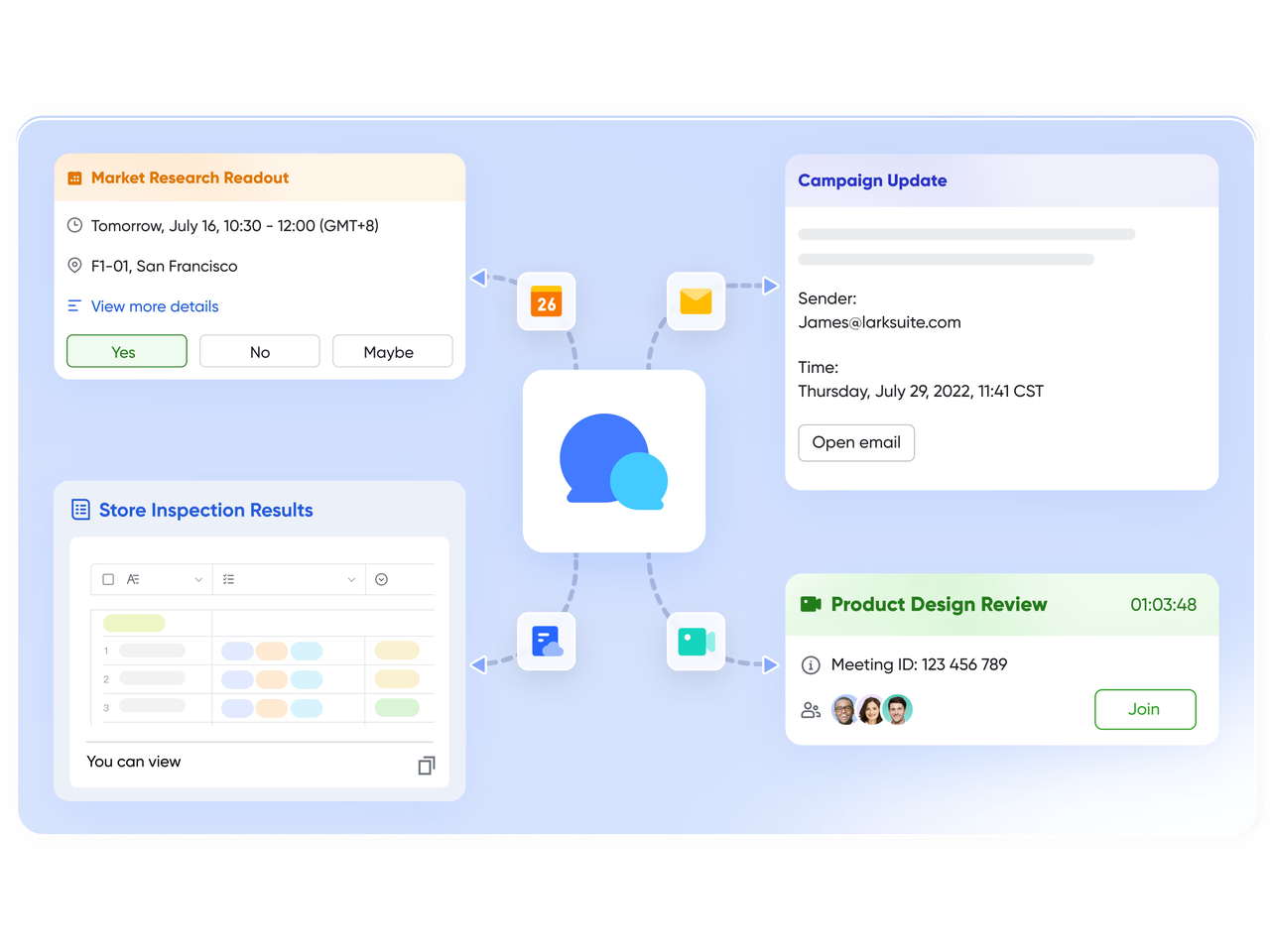
Even with processes in place, alignment doesn’t function when apps don’t talk to each other. People forget about things they need to do as they communicate, and important decisions get buried in conversation threads. Lark Messenger keeps conversations about work flowing.
Teams can talk about projects and quickly turn updates into tasks or link them to Base records. Translation technologies let teams from all around the world get things done quickly, and file sharing keeps the meaning the same. A casual conversation doesn’t just stop; it becomes part of the flow of execution.
Messenger keeps everyone on the same page by keeping communication and action in the same system. Every conversation is on results, which helps teams stay focused on their goals.
Conclusion
You don’t just align once; you do it all the time. Even the best ideas can go wrong if departments don’t work together. Lark and other platforms that bring people together illustrate how to get everyone on the same page and make sure they are all working toward the same goals.
Base shows everyone the same thing; OKR connects strategy to action; Calendar makes sure everyone knows what they need to do; Docs keep strategy alive; Tasks offer accountability through automation; and Messenger keeps talks on track. When you put these attributes together, alignment becomes a daily reality instead than simply a desire.
If a business wants to flourish, it needs to remember that alignment isn’t only about making plans; it’s also about following through. Everyone in the team works toward the same goals at the same time when workflows are linked.

